Hailsham South WwTW (2022)
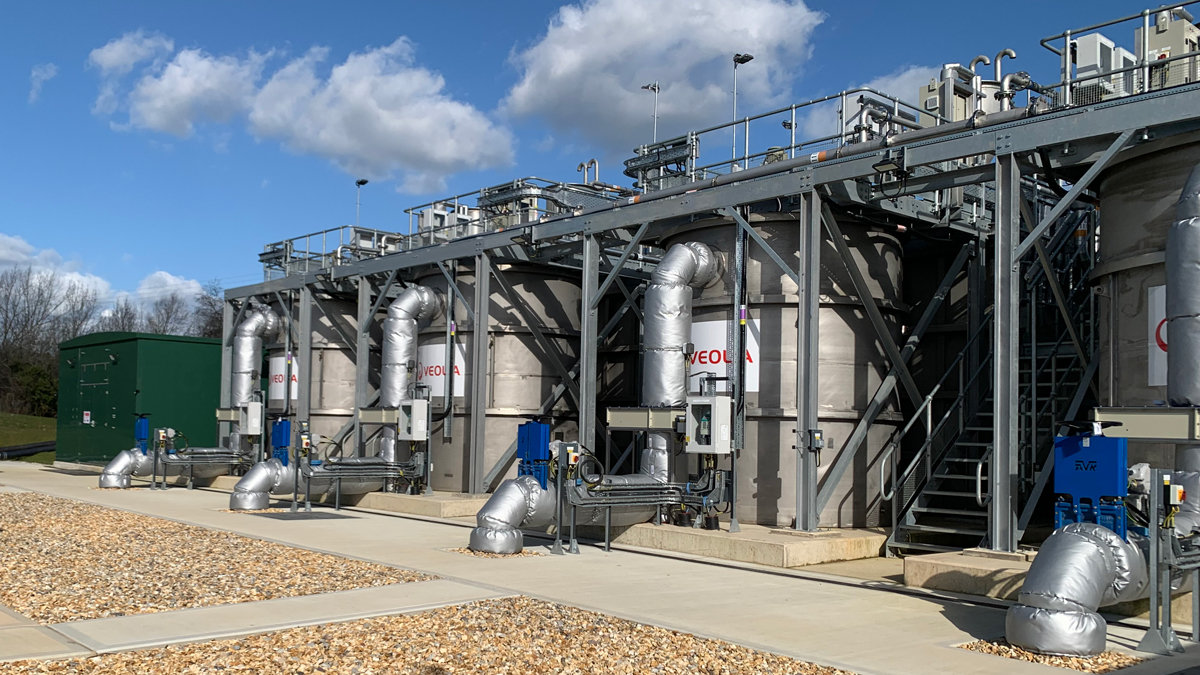
Hailsham STW: Tertiary treatment plant - Courtesy of CMDP JV
The town of Hailsham in East Sussex has been experiencing significant housing growth in recent years. To accommodate local housebuilding targets and protect the environment, Southern Water has invested £30m to upgrade the Hailsham North and Hailsham South Wastewater Treatment Works (WwTWs) using innovative technology. Upgrading these works was necessary to comply with a stricter Environment Agency discharge consent for phosphorous (National Environment Programme (NEP) Phase 5). Southern Water also needed to meet its obligations under the Habitats Directives and Water Framework Directive to improve the water quality of the Pevensey Levels, a biological Site of Special Scientific Interest and home to a population of Ramshorn snail, a priority protected species in the UK Biodiversity Action Plan. This case study will focus on the upgrade undertaken at Hailsham South WwTW, which commenced in 2020.
Tighter consents
To facilitate ‘Favourable Status’ designation from Natural England, the Environment Agency required Southern Water to tighten the existing total phosphorous consents from 1.0mg/l to the Technically Achievable Limit (TAL) of 0.25mg/l by December 2021, and via mutual agreement to push beyond this to tighter targets of 0.1mg/l at Hailsham South and 0.08mg/l at Hailsham North; the lowest in the UK.
Partnership approach
Once Southern Water’s commitment to target the extremely low levels of residual phosphorous was formalised with the Environment Agency and Natural England, delivery of the project required considerable partnership working, collaborative planning and design.
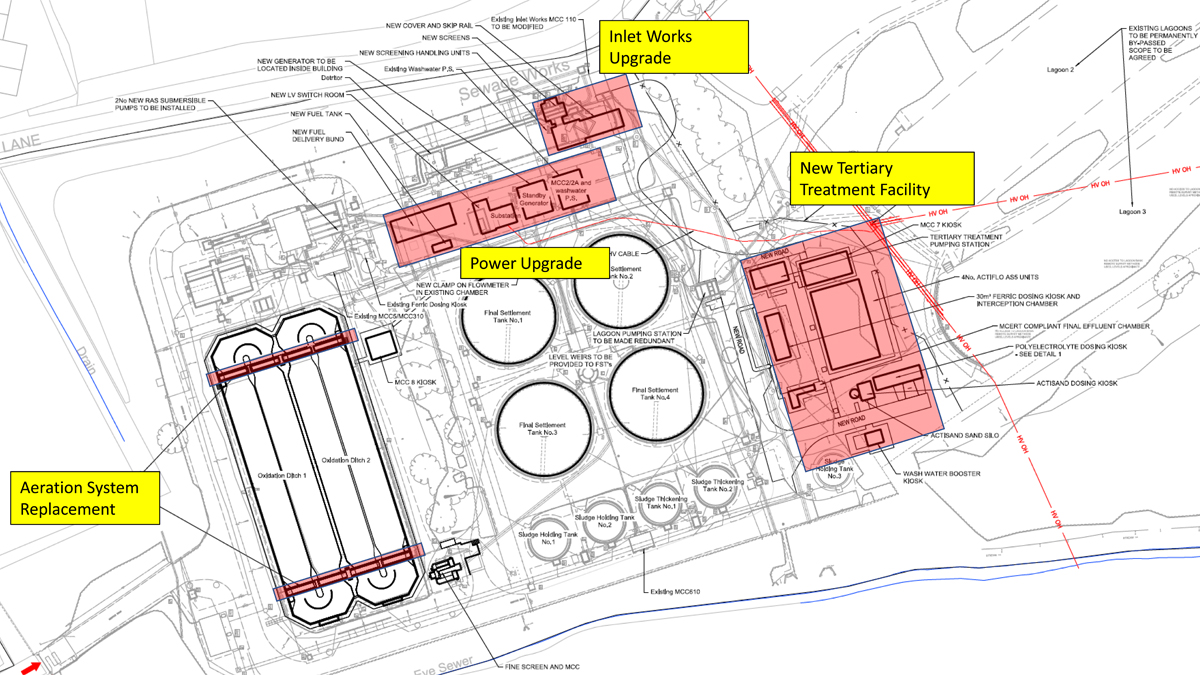
Site layout- location of new assets and upgrade work – Courtesy of CMDP JV
Southern Water’s in-house Engineering Technical Services (ETS) team selected the overall treatment process, working with Veolia Water Technologies to hone the Actiflo® plant for this specific application. This included a pilot trial at Hailsham South using a scale-model Actiflo® unit to confirm effectiveness.
The outline design was then passed to Southern Water’s delivery partner, CMDP, for further detailed design and costing ahead of construction.
CMDP is a joint venture between Costain and MWH Treatment, and as one of Southern Water’s Delivery Partners for its AMP6 and AMP7 Capital Investment programmes, is delivering a range of schemes to maintain and improve Southern Water’s water supply and waste water treatment works, including Hailsham South WwTW.
Existing works
Hailsham South WwTW is a key treatment site for Southern Water, providing wastewater treatment services to the southern part of Hailsham.
A previous upgrade of the works had taken place in the 1970s and prior to this project, the plant served a population equivalent of circa 30,162, with a maximum flow to treatment of 538 l/s. The existing works comprised the following:
- Inlet works: 3 (No.) band screens/screenings handling plant.
- Inlet pumping station: 4 (No.) Archimedes screws and 2 (No.) submersible pumps.
- Secondary treatment: 2 (No.) anoxic mixer tanks, 2 (No.) oxidation ditches fitted by bridge mounted aerators, and 4 (No.) final settlement tanks.
- Tertiary treatment: 3 (No.) final effluent lagoons
- Sludge: 2 (No.) picket fence thickeners, and 1 (No.) sludge storage tank
- Site-wide: Mains distribution board, standby generator, washwater pumping station and 7 (No.) motor control centres (MCCs).
CMDP, who participate in the Considerate Constructors initiative, worked closely with Southern Water to secure planning permission from East Sussex County Council and Wealden District Council prior to managing a wide-ranging programme of works.
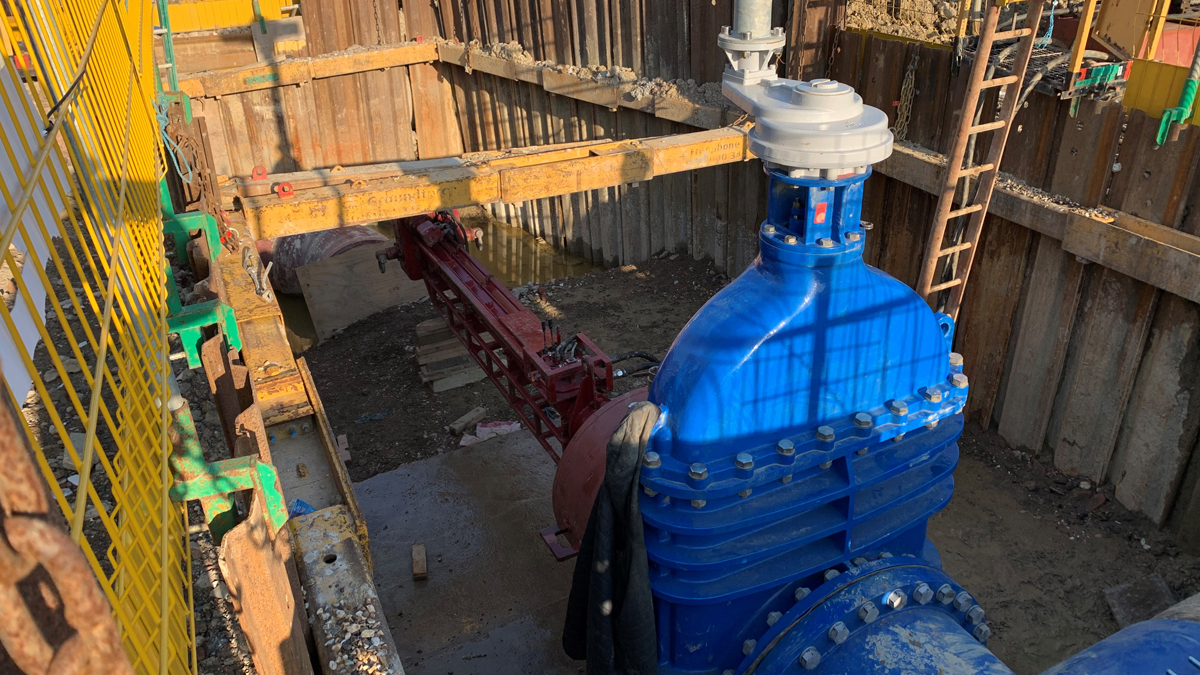
Temporary works for inlet valve/pipe DN900 – Courtesy of CMDP JV
Programme of works
- Civl works: Civil works required to facilitate the upgrade were undertaken by Coleman Construction & Utilities (CCU) and varied from installing standard slabs for kiosks, new footpaths across the site, a cofferdam, temporary works, new pipework, draw pits and manholes, as well as maintaining existing structures such as retaining walls.
- Temporary works: A number of temporary works were necessary on site, most notably the installation of the inlet pipe from the pumping station that is connected to the existing main. The pipe installed measured at DN900 and was connected to the existing main via hot-tapping methodology.
- Electrical works: Due to the scale of the upgrade at Hailsham South WwTW, over 50km of new cables were installed, with 40km of new cables required for the new tertiary treatment process alone. Sizes of the cables used varied from 0.75mm to 720mm.
- Inlet works: Prior to upgrade, Hailsham South WwTW was equipped with three band screens, which were replaced to install escalator screens from Longwood Engineering with a new upsized screening handling plant for increased capacity. This has not only increased the asset’s lifecycle but also improved the solids removal capability.
- Inlet pumping station: The inlet pumping station was upgraded with an additional two submersible pumps for increased return activated sludge pumps (RAS) capability.
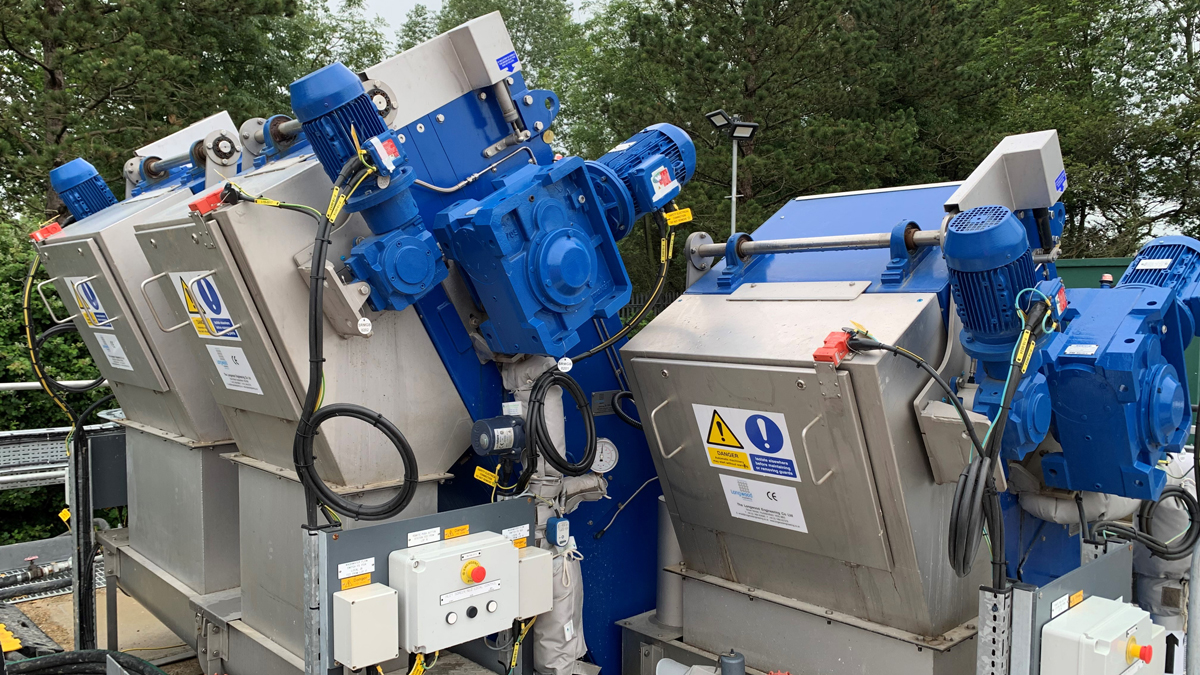
New inlet screens – Courtesy of CMDP JV
Secondary treatment
Improvements to secondary treatment capabilities has seen the oxidation ditch enhanced via a replacement of 8 (no.) Corgin rotors, with power and control through the new MCC to increase the treatment capacity required for the forecast increase in load from the 25% population increase to 37,935 by 2030 – refer to the Site Layout (above) for the location. Additional outlet pipework has been installed for improved hydraulic performance of the outlet flows from the oxidation ditches.
The existing weir levels on the final settlement tanks (FSTs) were uneven and varied along the tank perimeter. New FST level outlet weirs were installed in each final settlement tank as part of the scope of work; in order to do this, one was isolated and drained at a time. During Summer 2021, Southern Water Operations removed one tank from service at a time whilst the other three remained operational, allowing CMDP to undertake this process. Works were commenced in sequence for the isolated/drained tank.
Hailsham South WwTW: Supply chain – Key participants
- Delivery partner: CMDP JV (Costain/MWH Treatment)
- Design support: Stantec UK
- Civil engineering: Coleman Construction & Utilities
- Temporary works design: Groundforce
- Electrical installation & LV switch room kiosk: Econotech Ltd
- Mechanical installation: Pipe Systems Ltd
- Actiflo® units: Veolia Water Technologies
- Inlet screens & screenings handling: Longwood Engineering
- RAS submersible pump: Xylem Water Solutions
- Washwater booster pumps: KGN Pillinger
- Ferric dosing & kiosks: Lintott Control Systems Ltd
- Polymer dosing: Richard Alan Engineering
- Safety showers & eyebaths: Aqua Safety Showers International Ltd
- Standby generator: P&I Generators Ltd
- Bridge aerators: Corgin
- Phosphate & iron monitoring kiosk: Servitech International
- MCCs & systems integration: Saftronics
- Cleaning & tankering: MTS Cleansing Services
- Sand silo: Veolia Water Technologies
- Weirs to final settlement tanks: Pipe Systems Ltd
- Final effluent monitoring: Servitech International
- Actisand transfer kiosk: Veolia Water Technologies
- Polyelectrolyte dosing kiosk: Richard Alan Engineering
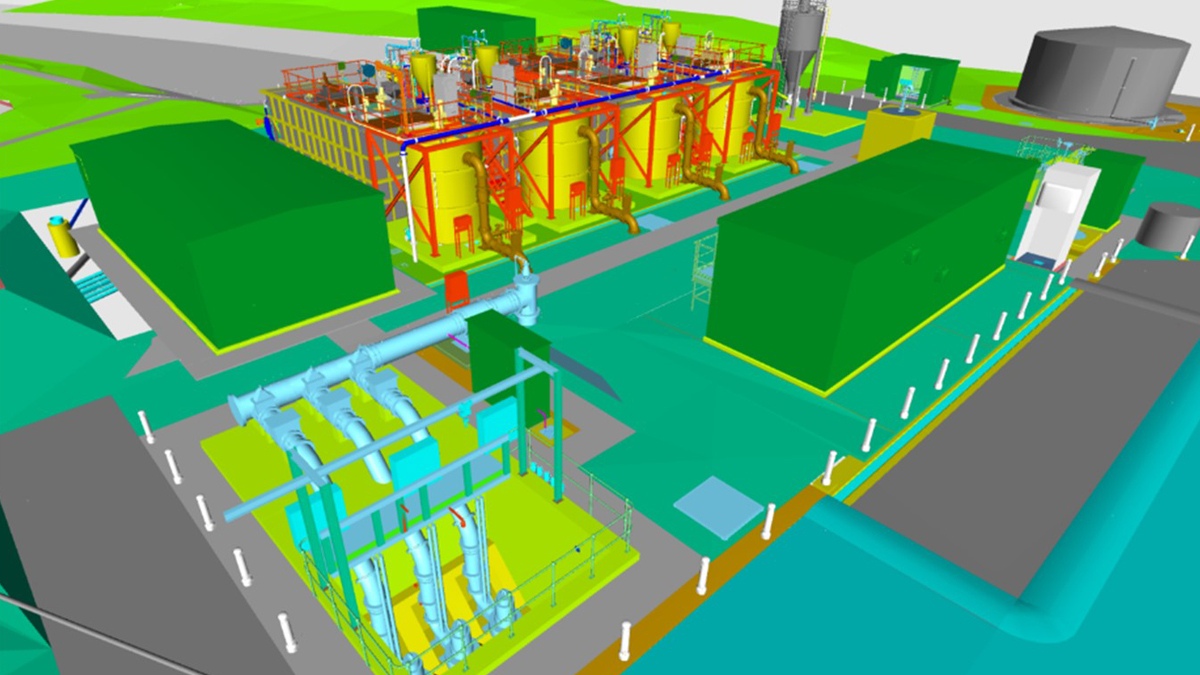
Tertiary treatment area 3D model – Courtesy of CMDP JV
Tertiary treatment package plant: clean water technology for wastewater treatment
Technical trials identified Veolia Water Technologies’ Actiflo® Turbo clarifier as a suitable solution for the upgrade at Hailsham South WwTW.
Actiflo® Turbo is a high-rate compact water clarification process, in which water is flocculated with micro-sanded polymer in a turbo mix draft tube. The micro-sand enhances the formation of robust flocks and acts as ballast, significantly increasing the saddling velocity. The unique characteristics of the resulting micro-sanded flocks allow for clarified designs with very short retention times, high-rise rate, and an extremely compact system footprints, which are up to 50 times smaller than other clarification processes of similar capacity.
As the Actiflo® process relies upon polymer dosing and a small residual can reach the environment, Southern Water engaged a toxicology specialist in aquatic life to determine the impact on the protected aquatic invertebrates. The resulting report provided Natural England and the Environment Agency with the reassurance that the proposed polymer dose would not have any observable effect. Ongoing monitoring of the polymer in the river continues, and the results are shared with Natural England and the Environment Agency.
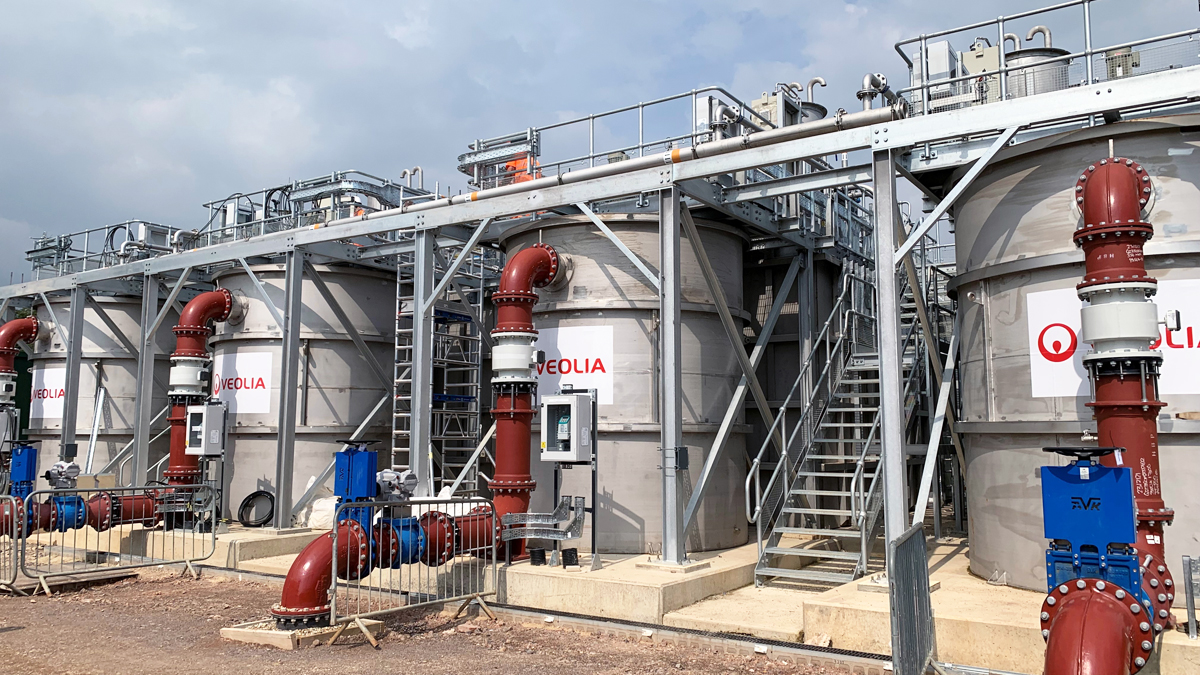
Tertiary treatment plant under construction – Courtesy of CMDP JV
In addition to ballasting the flocs, the micro-sand buffers the effect of settlement raw water flow or load variation, making Actiflo® Turbo a very stable process. Its short overall hydraulic retention time makes it easy to quickly optimise the treatment, ensuring a reduction in power consumption and operating costs. Depending on raw water quality and treatment objectives, the rise rate in Actiflo® Turbo ranges 80-150 metre/hour and can be as high as 200 metre/hour in some specific applications.
Thanks to the use of micro-sand the Actiflo® Turbo is a user-friendly process, which is very easy to operate and efficient in the treatment of difficult waters. In addition, short hydraulic retention times and high-rise rates allow for extremely compact system footprints, which translates into a substantial saving in investment costs.
Together, these unique features make Actiflo® Turbo the most efficient clarification process technology available on the market.
With the Actiflo® technology being package plant – i.e., a modular ‘plug & play’ solution that was prefabricated off-site, this brought about a number of benefits to the construction programme, including a reduction in time on-site and considerably less carbon emissions associated with construction activities. Other options, including membrane technology, would have resulted in a much higher carbon footprint.
As the Actiflo® units are modular, expansion of the process is easily attainable to meet future growth. The technology is fully automated and can handle sudden variations in flows and loads.
Washwater pumping station
The previous washwater system was replaced with a new system that provides washwater to the existing and new processes. The new system is fed downstream of the Actiflo® package plant and utilises final effluent.
Natural capital
As part of the upgrade of Hailsham South WwTW, Southern Water identified a tremendous opportunity to go beyond normal industry practice and create a natural ‘wilded’ biodiverse environment from three tertiary lagoons that formed part of the wastewater treatment process but were to be retired from service following the implementation of the new Actiflo® process.
Soil from the construction process was retained and used to backfill one of the lagoons, which was planted with native woodland tree species and a swathe of wildflowers. A great crested newt pond was also established with marginal aquatic planting.
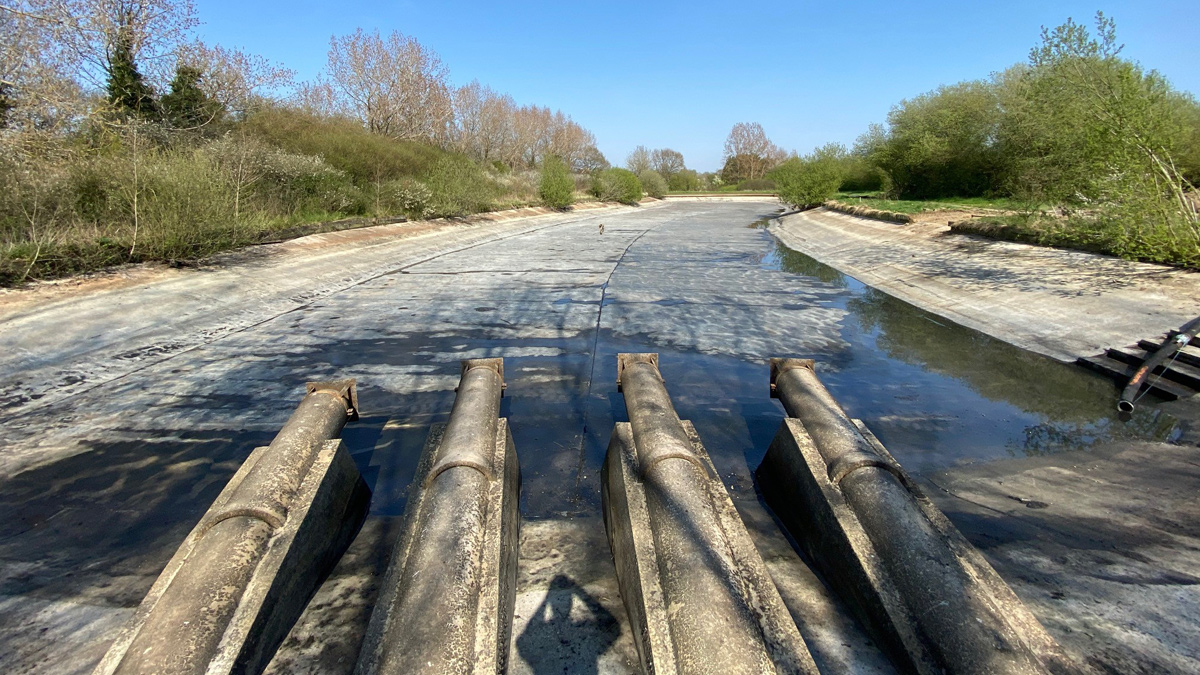
Lagoon 1 once drainage was complete – Courtesy of CMDP JV
The reuse of the excavated spoil to infill a section of one of the lagoons ensured the project did not need to dispose of over 3,500m3 of soil to landfill, avoiding over 300 lorry movements. This was calculated to have saved circa 17t of carbon.
To enhance the retained lagoons, an aquatic ecosystem specialist helped develop a bespoke solution that involved the creation of two floating habitat islands to purify the water, reduce the risk of septicity and provide a safe haven for the wildfowl that currently use the lagoons.
The enhancements provided an overall biodiversity gain by providing additional habitat for the great crested newts, reptiles, and bats, and improving the existing aquatic environment.
The retention of the lagoons as wetland features demonstrates a significant commitment to ecological and environmental protection and improvement.
Replacing the existing lagoons with an Actiflo® tertiary treatment process presented an ecological opportunity seized by the joint project team, contributing significantly towards the performance commitment in Southern Water’s 2020-2025 Business Plan to enhance the value of its natural capital.
The new habitat is likely to be the most significant and ambitious biodiversity net gain project from the AMP6 programme of works, demonstrating a significant commitment to ecological and environmental protection and improvement.
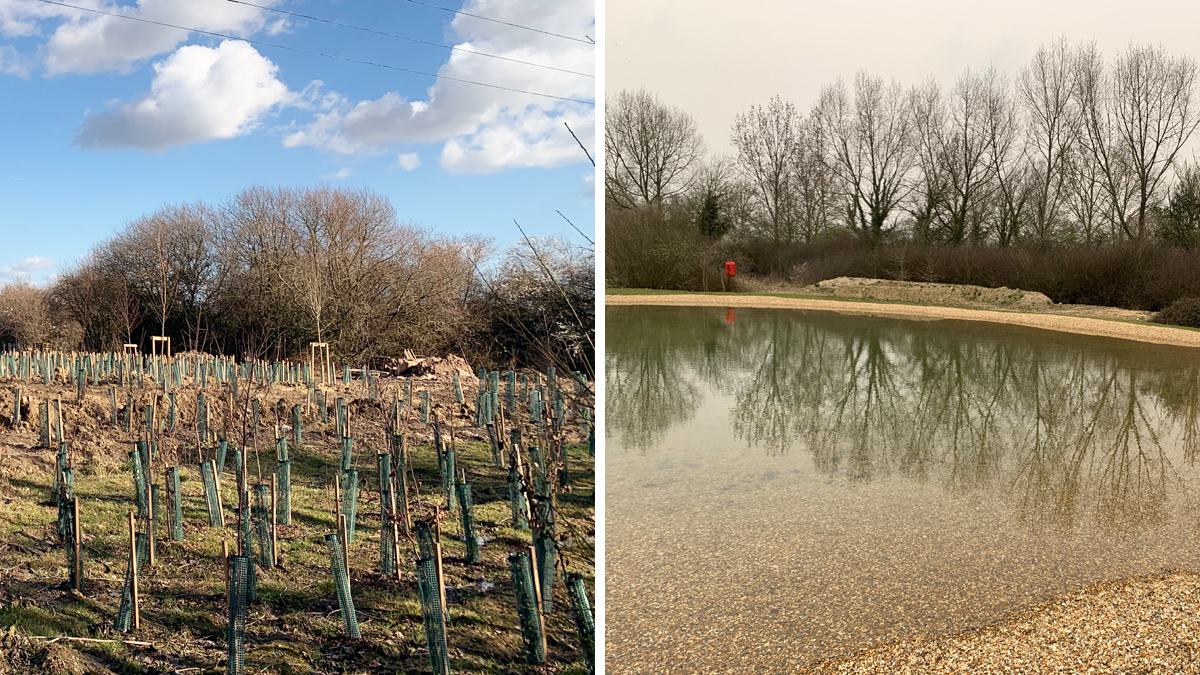
(left) After backfilling, Lagoon 1 was planted with native woodland tree species and a swathe of wildflowers and (right) a great crested newt pond was establishd with marginal aquatic planting – Courtesy of CMDP JV
Collaborative working to overcome significant challenges
From the commencement of works in 2020, CMDP worked closely with Southern Water Operations and ETS to keep Hailsham South WwTW operational and compliant throughout the upgrade, with significant challenges overcome along the way. These included supply chain systems integration issues and ditch cleaning scope; difficulties with sequencing, traffic management and maintaining compliance.
A UK ‘first’ at Hailsham South
Adopting the Actiflo® clean water process for wastewater treatment process was a UK ‘first’. Due to the high hydraulic upflow rate of this technology, the process boasts a footprint 5-25 times smaller than other clarification systems.
A detailed Operating Techniques Agreement (OTA), also the first in the UK, was drawn up between Southern Water, the Environment Agency and Natural England, to formalise the necessary additional operating commitments and ensure the effluent met the modelled Phosphorus target. Meeting favourable status and growth would not have been possible by complying with the Technically Achievable Limit limit alone.
Conclusion
The Southern Water/CMDP JV project team was able to achieve its regulatory date of 21 December 2021 and along with Hailsham North, Hailsham South WwTW now achieves the lowest phosphorus limits in the UK. The innovative approach and experience garnered from this project highlights six areas of potential to the wider wastewater industry as a whole:
- Proves the potential to go beyond the Technically Achievable Limit of 0.25mg/l where it is viable and beneficial to do so. This can potentially open opportunities for growth in areas near sensitive habitats and still protect the receiving watercourses.
- Showcases the use of Actiflo® on a UK wastewater site, demonstrating a compact solution that provides effective clarification using a small footprint. A high impact solution for smaller sites, without space to expand.
- Demonstrates a modular unit that offers a solution that is designed, fabricated, manufactured and assembled off site. This can help reduce installation costs, construction traffic, concrete and carbon impact
- The Operating Techniques Agreement (OTA) with the Environment Agency has created an excellent opportunity to encourage best endeavours by all parties to achieve limits that exceed the TAL. This type of agreement has the potential to be rolled out for other sites in sensitive areas.
- Knowledge sharing with other water companies, site visits to see technology working. With tightening regulatory limits across the industry and with public and political pressure to improve water quality these projects show what is possible.
- Maximising natural capital can serve as a blueprint for water treatment works across the UK, with redundant assets turned over to nature.









